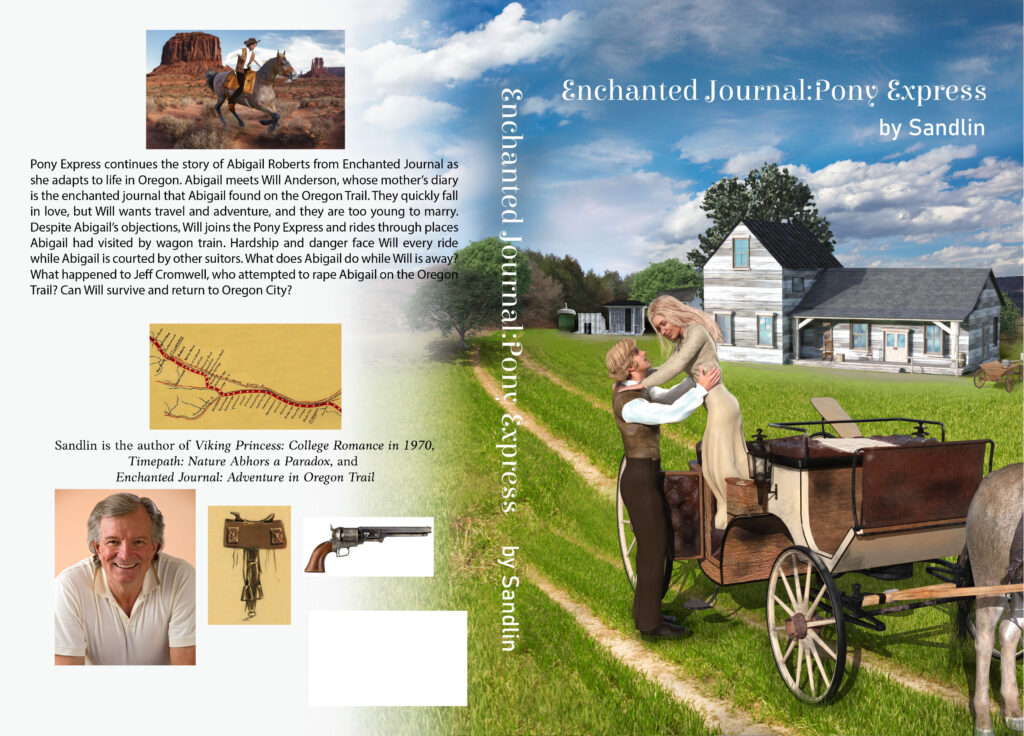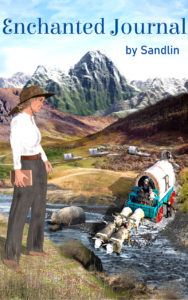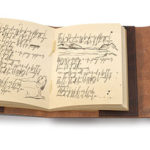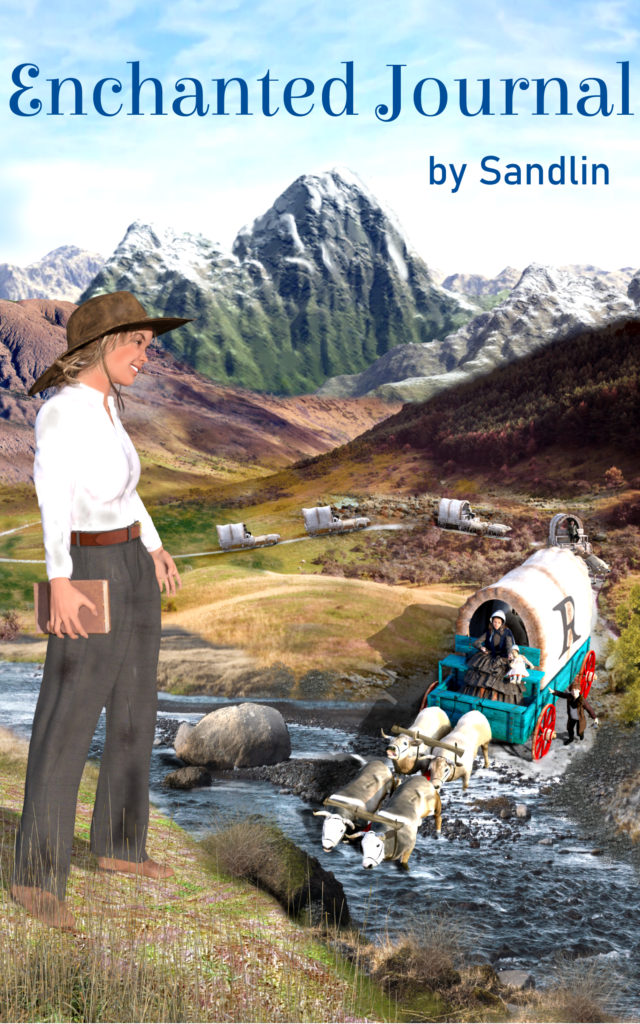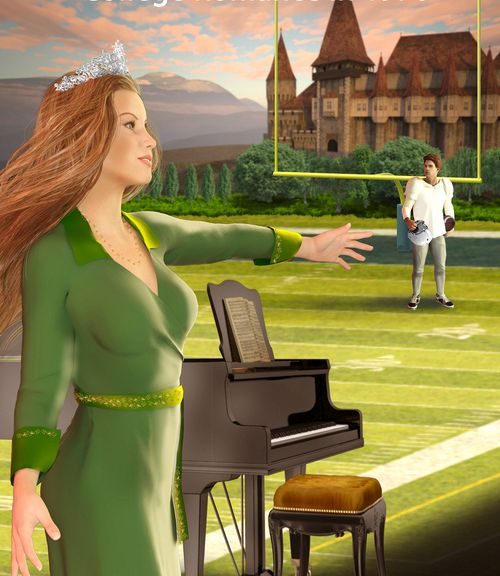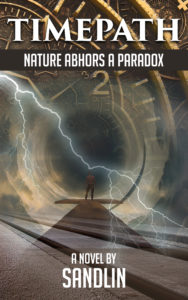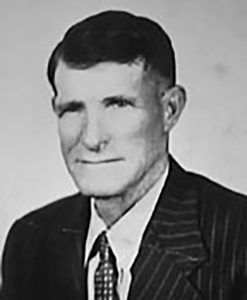Nearly a year ago, I dreamt about a family traveling west on the Oregon Trail. The dream seemed so real that I began writing a novel, Enchanted Journal, based on it.
The Oregon Trail, its end at Oregon City, and the characters in Enchanted Journal fascinated me. I almost immediately began writing a sequel, Pony Express, about settling into Oregon City that features Will Anderson, who was introduced towards the end of Enchanted Journal. Pony Express is nearly ready for publication.
All posts by Gordon Buck
Enchanted Journal Excerpt
[An excerpt from Chapter 1 “The Journal”, of “Enchanted Journal”, ; Copyright 2022, Gordon S. Buck.]
Chapter 1: The Journal – April 8, 1859, Friday
Abigail Roberts was picking berries—or rather searching for them on the Oregon Trail. After only a week on the dusty trail, Abigail already yearned for her Tennessee home. She could always find berries back home; here, she had to keep their covered wagon in sight and berries were few and far between. Still, she was not about to wander any farther, especially after Jeff Cromwell stared hungrily at her as she attempted to slip out of camp unseen. Her hand dropped for the comfort of the sharp patch knife hidden in her trousers. I’ve got to tell Papa that Jeff scares me.
Abigail pulled her felted hat lower in a futile attempt to block the sun’s glare. Yielding to a strange urge, she stepped out of the wagon wheel rut and turned to her left. What was behind those bushes? A book? The thin brown book lying in the sandy dust seemed to invite her and wait for her to pick it up. Abigail could almost hear it. “Read me. I can help you.”
Why would anyone throw a book away? Although some emigrants were already reducing their wagon loads by discarding heavy items, no one would toss a book at this stage. Books carried weight in entertainment and in silver.
Calling for closer examination, the brown leather journal was irresistible. How long had it been lying there? Abigail picked it up between her thumb and forefinger. It was not wet, rotten, or smelly—just dusty, like everything else on the trail. She gingerly placed it in her open palm, careful not to damage it, and thumbed through the still pliable pages. The first few pages contained writing, but the rest of the sheets were blank.
March 25,1843
This is my personal diary and stories from my adventure on the Oregon Trail beginning today.
It has begun! We left our home in Tennessee today and are on our way to Independence, Missouri, to join an Oregon Trail wagon train. This may well be the adventure of my life!
We sold everything and packed our wagon full of supplies and equipment. We will use our farm wagon and mules for now. Poppa says we will trade for oxen in Independence, but first, we must get to Memphis to catch a steamboat. I have never even seen a steamboat, but soon I will be on one!
Of course, Momma is worried. Truth be known, she would rather stay near family and friends, but Poppa is restless and excited to move to Oregon. He talks about our “Manifest Destiny” to make all North America part of the United States.
From Memphis, we go up the Mississippi River to St. Louis, Missouri, and then take the Missouri River to Independence. We will get more supplies in Independence for the long trail.
I can scarcely wait to be on the trail! What will I do? Who will I meet?
*****
After a few pages, the writing ceased and Abigail studied her surroundings. Abigail’s family was in the same location as Milli Madison’s family had stopped years ago. Poor thing, I bet she was sad to lose her journal. Looks like she only wrote in it for a few days. But I’ll take good care of it. I’ll read it tonight. It will become my journal.
On her way back to their encampment with half a handful of berries, Abigail considered her own situation. Almost exactly seventeen years after Milli Madison, she, too, left Tennessee on a similar mission and route, their prairie schooner loaded with much of the same equipment. However, whereas Milli was excited about her journey, Abigail was not. She wished they had not left Tennessee, but what else could she do? Like her brother and sister, and even her mother, she had to follow her father’s wishes.
Fifteen years old, Abigail Roberts was the oldest child of Michael and Alice Roberts. More than a tomboy, she was tall and slim, but strong and hardened by farm work. Abigail helped her mother in the kitchen, but also cooked entire meals on her own. Her mother and father taught her to manage the farm, farmhouse, and family. Abigail would make an excellent farm wife; however, none of the boys or young men in their small community attracted her.
With Milli’s journal in her hand, Abigail recalled the gleam in her father’s eyes when he bought Randolph Marcy’s book “Prairie Traveler: A Handbook for Overland Expeditions.” More than read, Michael studied the handbook late that night, his calloused hands turning pages forward and backward. All the next day, he talked about the wisdom of the handbook as they worked in the fields. After her father finished the handbook, he insisted Abigail read it. Then he read it again. At that point, Abigail knew they would head west, and she dreaded it.
Abigail sighed as she remembered her father’s decision and their preparations for the Oregon Trail.
Enchanted Journal
My latest novel, Enchanted Journal: Adventure on the Oregon Trail, is now available on Amazon https://www.amazon.com/dp/B0B3N8MPLL .
The leather diary beckons Abigail Roberts from the ruts of the Oregon Trail. “Read me,” it teases, “I can help you,” but few pages contain writing. Mysteriously, a new page appears the next day to warn her of a dangerous river crossing and recommend a better one. The diary, written by teenaged Milli Madison in 1843, changes Abigail’s life as fresh pages of Milli’s adventure magically appear.
In 1859, fifteen-year-old Abigail Roberts begins her journey on the Oregon Trail. A farm girl and tomboy, she does not want the trail, but her father is eager for adventure and free land in Oregon.
Milli and William Anderson become sweethearts on the 1843 trail, but Abigail is determined to avoid romance and focuses on Oregon in 1859.
Captain Bridgewater, an experienced wagon master on his final trail, guides the caravan, and teaches the ways of the trail.
Follow Abigail’s adventures on the Oregon Trail in 1859 as she follows Milli’s adventures from 1843.
A Rant
Fair warning: This is a rant.
I had to stop all comments because a certain person continually entered fake comments just to promote his own websites. I don’t understand how or why this person does this, but the only way I could prevent it was to not allow comments on all my posts.
I’ll leave this post open to comments so I can test my latest options for preventing spam. If your website or email address uses words like ‘hairstyle’, ‘hair’, ‘style’, ‘hairstylevip’, etc. then you may not be able to comment – at least I hope so.
Of course, the spammer does not actually read my posts, so this message may go unnoticed, but I’ll leave this post up for a few days and see what happens.
Please Review my Novels!
I’m asking for favors. If you read and enjoyed one of my recently published novels: “Timepath,” or “Viking Princess” please go to the Amazon site and leave a rating and a review. Thanks in advance.
Excerpt from Viking princess
[An excerpt from Chapter 1 “Introductions”, “The Viking Princess”, https://www.amazon.com/dp/B09MYSS2T1. Copyright 2021, Gordon S. Buck.]
“No wonder they call you ‘The Viking Princess.’”
Fiona was leaning over the desk and reaching for a book on the top shelf, her long, wavy auburn hair falling off her shoulder and hanging to the desk when Mary came in.
Fiona’s welcoming smile disappeared. “I’m a Scot, no a Viking. Vikings disappeared centuries ago.”
The 1970 fall semester was into its third week at Mississippi University, and student routines were taking shape. Students re-acquainted themselves and made new friends in the process. Fiona was Mary’s newest friend; they roomed on the same floor of the dormitory and had met on the first day of the semester. A six feet one-inch tall beauty, Fiona towered over Mary, a short, plain brunette.
“You know you’re a Scot, but to most people, you’re a Viking.”
Fiona made no bones about it. She was exceedingly proud of her Scottish ancestry. Scottish landscapes, castles, and the poetry of Robert Burns adorned her dormitory room walls. She was raised in Aberdeen, where her late father had been an extremely successful business owner.
“Anyway, I think ‘Viking Princess’ is an excellent description. You certainly look the part, and I mean that in the most positive way.”
Fiona regained her smile. “Weel, if others see me that way, I suppose I must become a Viking Princess.”
“I wish I could get books off the top shelf.”
Fiona smiled and sat down, holding her book. Mary sat beside her in a frilly lace-covered guest chair.
As Mary expected, Fiona had been alone and deep in study at her desk. As far as Fiona was concerned, Sunday nights were for studying––as were all nights.
“What’s on your mind?” asked Fiona. Mary sensed Fiona wanted to return to her studies, but Mary had a discussion in mind.
“I want to introduce a friend of mine to you,” Mary began. “In fact, he’s my best friend. We were neighbors and grew up together.”
“He?” Fiona peeped up from her desk. “Is this the same boy ye wanted to introduce to me the day we met?”
“Well, yes, but then I wanted to show you off and watch his reaction.”
“Mary, I must concentrate on my studies and no on my social life. This is my first semester. That’s why I’m no getting out much. It may be next semester or even next year until I feel like circulating––much less dating. I dinna ken.”
Mary argued, “Now that I know you better, you definitely should meet Alexander. Believe me, you will like him. Besides, you need to overcome your shyness and do something other than study. He can help you.” She smiled.
The Viking Princess: College Romance in 1970
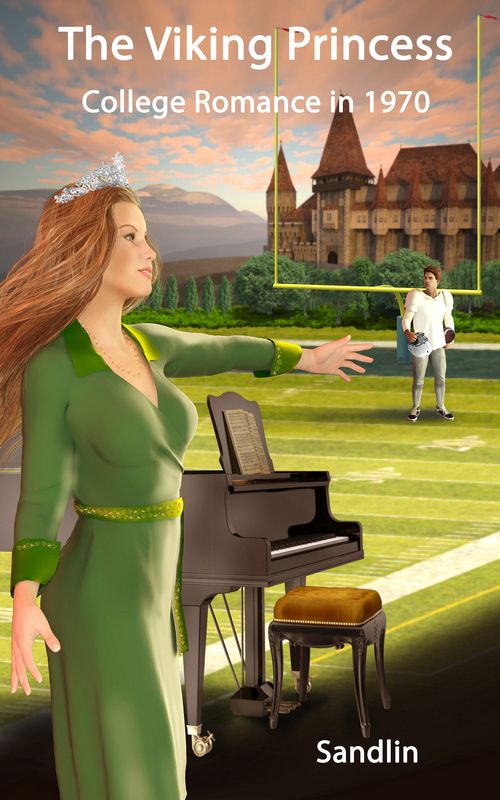
My second novel, “The Viking Princess: College Romance in 1970,” has been published on Amazon, see https://www.amazon.com/dp/B09MYSS2T1 . No, I didn’t crank it out in a couple of weeks. In 2021, I actually wrote two novels. Here’s the explanation.
In writing “Timepath: Nature Abhors a Paradox”, https://www.amazon.com/dp/B09LGV94RL, I needed lots of study and help and signed up for online classes. Then I needed a practice novel for the online classes, so I created “Viking Princess”—a ridiculous “Hallmark Movie” kind of novel in which anything is possible. “Viking Princess” soon turned into a romance novel and, rather than change its genre, I determined to take on the challenge and finish it.
“Viking Princess” was a lot of fun to write and I was encouraged to publish it. Why not? I hired an artist and described the characters and scenes. Seeing her illustrations convinced me to publish “Viking Princess.”
*****
Fiona is an auburn-haired Scottish orphan called ‘Viking Princess’ because of her height, beauty and regal bearing. She is a serious, but shy, fine art student and keeps to herself. Fiona stereotypes football players as dumb bullies. Her new friend, Mary, wants to introduce Fiona to her best friend, Alexander.
Alexander is the Big Man on Campus. A handsome engineering student and star football player, his ambition is to become an inventor. Everything is easy for Alexander. Mary describes Fiona as ‘having a good personality’—intentionally not mentioning her beauty — and Alexander reluctantly agrees to meet her.
As they become acquainted, Fiona and Alexander must overcome cultural differences, jealousy, punishment for PDA, harassment, and family.
Timepath: Nature Abhors a Paradox
For the past year, inspired by my grandfather, J. W. Hale, I’ve been attempting to reinvent myself as a novelist. As an avid reader, I always wanted to write novels, and had made various unsuccessful attempts over the years. Finally, I realized that, at nearly age 24 °C, I had better get busy if I were ever to write my novel.Time travel has always fascinated me and my own time travel novel was first on my bucket list of writing. I collected my pieces and snips and began writing my novel. It was a disaster–too much engineer, bad habits, and ignorance of organization. I signed up for several online novel writing classes and submitted many rough drafts and samples for criticism.
And now, I have finished my novel! “Timepath: Nature Abhors a Paradox” is entirely different from the novel I first imagined, but I can put a big check mark on my bucket list!
The paperback version is on Amazon at https://www.amazon.com/dp/B09LGV94RL
The ebook version is on Amazon at https://www.amazon.com/dp/B09LSM6YLC
“Timepath: Nature Abhors a Paradox”
When Greg learns that his romantic interest, Anne, is actually his sixth great-granddaughter and is susceptible to breast cancer, he joins an experimental time travel project based on the twisted string theory of time. Although his official mission is to be briefly transported to 1810, his personal mission is to remain and administer a cancer preventative. The time travel team is baffled by Greg’s disappearance and attempts to discover the reason. Anne remains in 2022 and defends Greg’s reputation. Greg and Anne devise a method for Greg to save artifacts, letters, and photographs from the early 1800s where he must learn to live. They each make a time capsule to record their lives.
James Warren Hale
James Warren Hale (1886 – 1966), my grandfather, was, primarily, a laborer on the railroad but he was also an aspiring writer. Beginning in 1942, and likely earlier, he wrote a total of 28 short stories, plays or novels –5916 pages — in 35 journals. The journals are a mix of hard cover “Record” books and spiral bound notebooks. Most of his stories are very simple and written in ink with a small but neat cursive handwriting.
I recall seeing a few of these stories along with a typewriter on a table in the bedroom he used at the Askew Farm near Meridian, Mississippi. This would have been in the late 1950s. I thought there were only a few stories. After his death in 1966, his daughter, Jeannette Hill, kept the manuscripts. Jeannette died in 2004. After the death of her husband John in 2018, I asked their son, John if he was aware of the stories and if they were anywhere to be found. John eventually found the manuscripts in an old suitcase. John gave the manuscripts to me and I began to study them.
I typed three of his stories, including his autobiographical “Railroad Man” and have now put them in a book, “The Times, Life and Stories of J. W. Hale” along with some genealogical information. The book also includes a short autobiography about growing up in the late 1800s that was written by Dr. R. E. Hale, brother of J. W. Hale as well as a history of the Elizabeth Presbyterian Church that they attended. I’ve self-published this book on Amazon in both paperback and ebook format so others have access to it.
Frankly, these are not good stories but I’m pleased to have them. They tell a little more about the grandfather that I barely knew. In particular, his autobiographical sketch, “Railroad Man”, provides a lot of background information.
My grandfather may not have actually intended for his stories to be read but I’m pleased to make him a published author.
Serbian Chef Knives
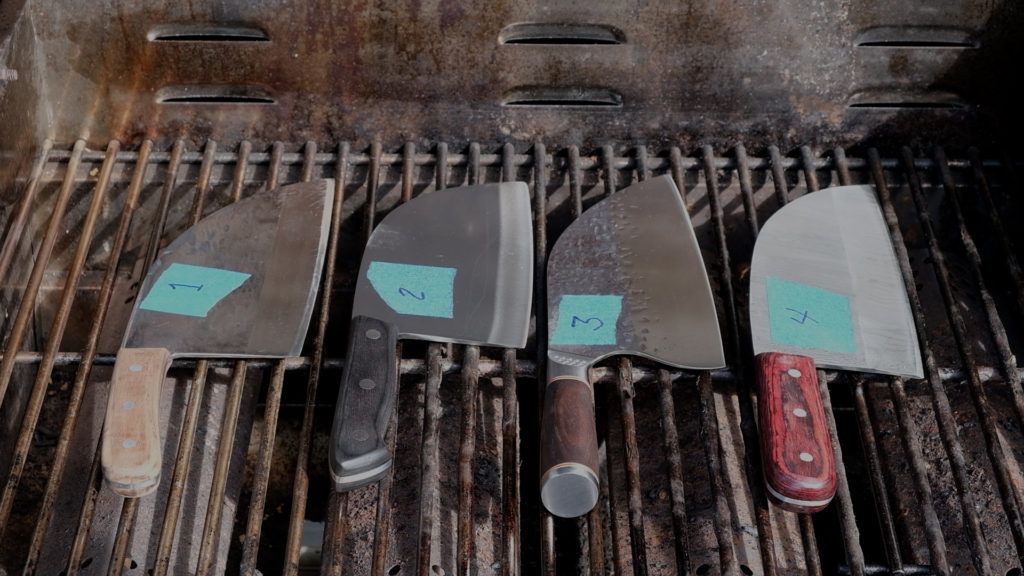
A friend, knowing my interest in knives and growing interest in cooking, introduced me to the large “Serbian Chef Knife” via the AlmazanKitchen cooking channel on YouTube. Although the recipes and cooking were entertaining (it’s a popular channel), I was more intrigued by their very large chef’s knife which looks like a rounded off cleaver. Thinking to purchase one, I discovered that it carried a very expensive list price but was deeply “discounted”.
After reading up a bit on the knife, I’ve found quite a few copies being sold at a much lower price. Of course, some say the copies are no good and some say they are just as good. I decided to find out for myself. I first ordered an authentic Almazan Kitchen Original Knife; $147 without sheath. It looks nice and feels good but was very dull. Next I ordered the lowest priced look alike knife from Amazon: XYJ Full Tang Serbian Knife 3CR13 Stainless Steel Butcher Chef Knife for $16. It is slightly smaller and thinner than the Almazan Kitchen Original Knife but arrived quite sharp. I also ordered a Promithi Full Tang Forged Handmade Professional Kitchen Chef Knife from Amazon for $36. It has a slightly different shape from the Almazan Kitchen Original Knife but also arrived quite sharp. Finally, I ordered the 3/32” thick Almazan Chef Style Kitchen Knife from Spain in the optional Damascus metal.
Here are links to the knives I purchased:
- Almazan Kitchen Original Knife – $147 without sheath, $176 with sheath
- XYJ Full Tang Serbian Knife 3CR13 Stainless Steel Butcher Chef Knife – $16; no sheath
- Promithi Full Tang Forged Handmade Professional Kitchen Chef Knife – $36; no sheath
- Almazan Chef Style Kitchen Knife (3/32” and 5/32” thk) – $89; with sheath (red handle)
The following knives look similar although some have a few more curves to the shape:
Almasi – $90; no sheath
VKY Knife- $58; with sheath
Ken Fuyuki Serbian Chef’s Knife – $70; no sheath
Promaja – $85; with sheath
Nakiri Knife – $48; no sheath
Jaka – $98; no sheath
Zeekka Serbian Meat Cleaver and Original Serbian Chef Knife – $130
Master Snazan Serbian Knife – $85; no sheath
Mr. Teuchi Serbian Knife – $90 no sheath.
DIY Knives
A number of knife makers have made their own variations of the “Serbian Chef Knife”. Their starting point is often an old saw blade or leaf spring. Here are a few links to various DIY Serbian Chef Knives:
Almazan bıçağı – Knife Making – Serbian Chef Knife (Almazan)
CUTELO SKULL
Making Almazan damascus kitchen knife.
You can even purchase a blade blank and make your own!
My Tests and Video
I conducted tests on my knives and made a video describing the knives and tests: https://www.youtube.com/watch?v=cKsq-teX0PM&t=18s
Some test results are summarized below:

Controversy
Who invented or developed or even was first to use the Serbian Chef Knife is controversial. I suspect that the Almazan Kitchen Original Knife was first. The Almazan Kitchen Original Knife folks make a strong claim to have developed the Serbian Chef Knife and claim that all others are “fake”.
Almazan is the surname of Boki and Alex Almazan from Serbia. Their knife can only be ordered from them – there are no retailers. Their trademark application was entered on 2017-11-25 by Aleksandar Almazan. The mark consists of a shaded illustration of a tomato containing the wording “ALMAZAN KITCHEN” written in stylized text. The word mark is “Almazan Kitchen”.
The first time the Almazan Kitchen Original Knife was shown online was in their “How to Make Quesadilla…” video published on Feb 3, 2016. This video is no longer available on their YouTube channel. The knife used in the next several videos does not look like their Almazan Kitchen Original Knife. The Almazan Kitchen Original Knife appeared again on May 29, 2016 but there were no comments or sales pitch for the knife. It looks to me like by October 19, 2017 that the Almazan Kitchen Original Knife had taken shape and people were beginning to comment on it. The October 21, 2017 video is the “All Others are FAKE” video. Judging by the comments, knives had been available for purchase for several months before October 2017.
It turns out that there is a city in Spain named Almazan and that bladesmiths have been making knives there since 1985 using 18th century blacksmith techniques. However, I think that Almazan Spain did not begin making “Serbian Chef” knives until 2017.
As noted previously, there are now many “Serbian Chef Knives” for sale.
In a random survey of whoever was around, many people preferred knife #3, the Promithi, based on its look and feel but a few preferred knife #1, the Almazan Serbia, or #4, the Almazan Spain. Often people commented that knife #2, the TYJ, seemed a bit heavy.
Which knife do I use? If there is an audience, I’ll use knife #1, the Almazan Serbia, and tell the story of the outdoor chefs and their YouTube channel. Then I might drag out the Almazan Spain knife to show off the Damascus blade. If there’s no audience, then frankly, I’ll use my Wustoff Santoku knife – it just obviously cuts better.
